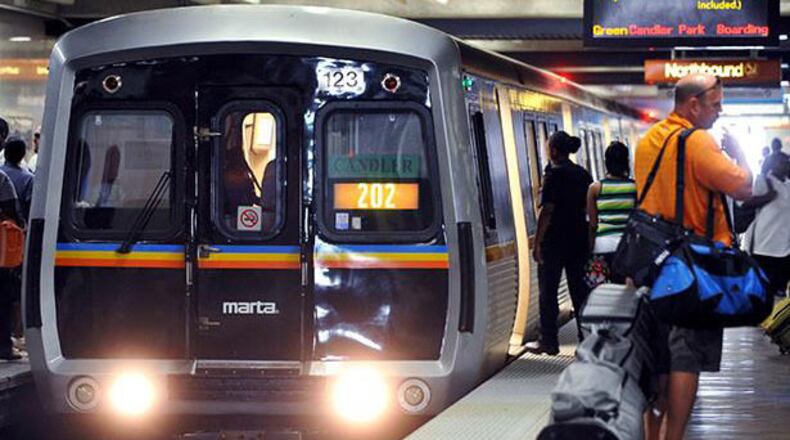Speaking at the annual State of MARTA recently, I challenged the business, political, and civic community to strive for an ambitious but achievable goal: securing $100 billion in funding for transit and technology improvements to ensure the prosperity and vitality of metro Atlanta’s fast-growing region over the next 40 years.
Since then, I’ve been encouraged by the mostly positive reactions to my speech from others who agree that our region’s traffic-choked status quo is a dead end. It’s no secret that nightmarish gridlock on highways and local roads is threatening our economic competitiveness and hazardous to our health and quality of life.
By matching our aspirations to reliable and robust funding sources, metro Atlanta’s future could someday include fleets of new transit vehicles, gleaming rail stations and bus facilities, and cutting-edge innovations that offer residents and visitors truly world-class mobility options.
MARTA is committed to playing a key role in working with our member jurisdictions and partner transportation agencies to forge the types of major capital and infrastructure improvements that are critical to keeping our region moving forward.
At the same time, MARTA is also keenly focused on cultivating the region’s rich vein of “human capital” to deepen and strengthen relationships with our employees, our customers and, most of all, with the communities we proudly serve.
What does that look like? Some of our customer and community-centric efforts are already underway and showing results:
- MARTA's Artbound program, for example, is a showcase for the region's dynamic cultural community with live performances, mural installations, and other place-making activities which are enhancing the transit experience for customers.
- In partnership with Soccer in the Streets, MARTA is expanding its Soccer in the Stations program. It provides children and adults an opportunity to practice and play the world's most popular sport at "pitches" installed on Authority-owned property.
- MARTA also counts the growing roster of transit-oriented developments (TODs) springing up at rail stations as powerful tools to transform communities. Built in collaboration with the private sector, our TODs are helping create smarter, denser, and more equitable places for people to live, work, and play – without ever getting in a car.
While those programs represent proven and potential game changers, MARTA is doing much more to move the needle on transit – with good reason.
Like most legacy transit systems across the country, MARTA has experienced declining ridership, a trend explained by several factors such as improving economic conditions and the increasing popularity of ride-hailing car services.
To retain its existing riders while attracting new ones, MARTA must foster an internal culture of world-class customer service. That’s why we’re establishing a new position – the Chief Customer Experience Officer – that will be charged with addressing riders’ concerns and engaging them in ongoing and meaningful conversations about how we can do better.
MARTA is also launching a Riders Advisory Council that will be composed of diverse stakeholders who can provide us with invaluable, real-world input on upgrading the quality of our transit services. MARTA bus service, in particular, must constantly evolve to meet the needs of customers.
The heart-and-soul of MARTA’s operations are the frontline employees who deal directly with customers at our 38 rail stations. To engender a genuine sense of pride and ownership, we’re creating a new position with opportunities for specialized training to advance their careers. Across the board, it’s imperative for MARTA to recruit, train, and retain top talent.
In marking MARTA’s 40th Anniversary as a combined bus-and-rail system this year, we salute the often-unsung visionaries in state government and from our founding jurisdictions – Fulton and DeKalb counties and the City of Atlanta – whose foresight and fortitude made our transit system a reality.
We also honor the invaluable contributions, support, and guidance we’ve received from our most recent jurisdictional partners in Clayton County, and look forward to the March 19 ballot referendum when Gwinnett County voters will decide whether to join the MARTA system.
The Atlanta region is on the verge of making the largest investment in transit and technology since MARTA’s inception. But let’s be clear; it will take more than money to get where we need to go. As we stand at history’s doorstep, I’m inviting the next generation of visionary leaders to work with MARTA and our partners to cross the threshold.
About the Author
Keep Reading
The Latest
Featured


